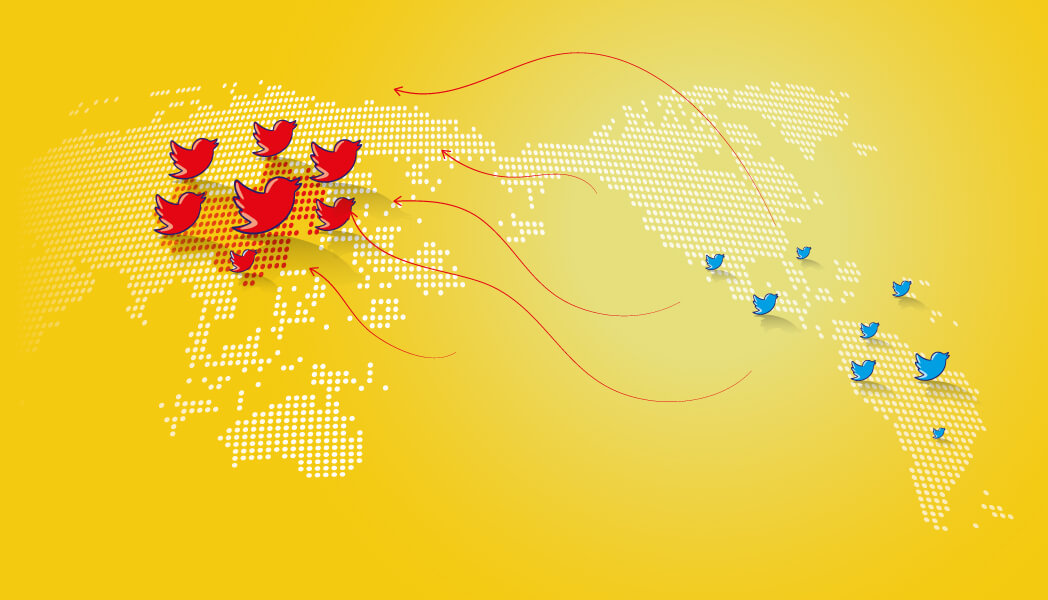Categories 2020-II
FIGURE – TYPE OF ACCOUNT FOLLOWERS
| Type of account followers | Description |
| Citizen (Foreign audience) | Ordinary citizens’ Twitter accounts (Foreign audience). |
| Citizen Private account | Twitter accounts of possible citizens, but impossible to verify as they are private. |
| Chinese or Taiwanese Citizen | Twitter accounts of citizens from PRC or Taiwan (Not considered a foreign audience). |
| Influencer | Twitter accounts of public figures outside the PRC (Writers, musicians, politicians, business people, etc.) (Foreign audience). |
| Chinese government | Twitter accounts of the Chinese Ministry of Foreign Affairs and its spokespersons, as well as the accounts of PRC representatives and diplomatic representations in other countries around the world. |
| Content amplifier | Twitter accounts belonging to people who post content about the PRC. |
| BOT | Twitter accounts managed by software to perform specific actions. |
| Suspended or deleted account | Twitter accounts that are no longer available because they have been deleted or have been suspended for violating the platform’s policies. |
FIGURE – TYPE OF ACCOUNTS FOLLOWED
| Type of accounts followed | Description |
| Chinese government | Twitter accounts of the Chinese Ministry of Foreign Affairs and its spokespersons, as well as the accounts of PRC representatives and diplomatic representations in other countries around the world. |
| Chinese media | Twitter accounts of state-owned media in different languages. |
| Influencers | Twitter accounts of public figures outside the PRC. (Writers, musicians, politicians, business people, etc.) (Foreign audience). |
| Citizen | Ordinary citizens’ Twitter accounts (Foreign audience). |
| Foreign governments and media | Twitter accounts of governments and/or government representatives from countries other than Latin America and the Caribbean. Twitter accounts of media other than those from Latin America and the Caribbean. |
FIGURE – MOST FREQUENTLY MENTIONED USERS WITH THE HIGHEST NUMBER OF REPLIES 2020
- Government entities: Twitter accounts of the presidents and prime ministers of Latin American and Caribbean countries, ministries, regional and municipal government entities, as well as the accounts of the representatives in the Legislative Assemblies.
- Personal accounts: Twitter accounts of each Chinese diplomatic representation in Latin American and the Caribbean.
- Citizens: Ordinary citizens’ Twitter accounts (Foreign audience).
- Chinese government: Twitter accounts of the Chinese Foreign Ministry and its spokespersons.
- Media: Twitter accounts of Latin American and Caribbean media (press, radio and television), and journalist accounts.
- Foreign governments: Twitter accounts of governments and/or government representatives from countries other than Latin America and the Caribbean.
- Multilateral organisms: Official Twitter accounts of different Multilateral Organizations such as the World Health Organization (WHO), the United Nations (UN) and the Pan American Health Organization (PAHO) in different languages.
- Chinese media: Twitter accounts of state-owned media in different languages.
- Influencers: Twitter accounts of public figures in countries where China’s diplomatic representation is based, and globally (Writers, musicians, politicians, businesspeople, etc.) (Foreign audience).
- Foreign media: Twitter accounts of media other than those of Latin America and the Caribbean.
- Chinese companies: Twitter accounts of Chinese companies such as: Huawei, Alibaba Group and Foundation Ma.
FIGURE – MOST WIDELY USED HASHTAGS BY PRC ACCOUNTS IN LAC – 2020
For the item “Most widely used hashtags”, the following categories were constructed taking into account the most relevant topics in each of the accounts analyzed:
- For direct mention of SARSCovid-19, the following were used: #COVID, #Covid-19, #Coronavirus; #Covid, #COVID-19 and #Pandemia
- For the evolution of the health crisis in China. The following were used: #China, #Wuhan and #Hubei
- To call for solidarity from all countries in the fight against the pandemic. Several purposes: to build support and trust for China; to counter the effect of accusations over the origin of the virus; and to highlight China’s international cooperation in the fight against the pandemic. The following were used: #chinayuda, #Solidaridad, #Unidoscontraelvirus, #Handinhandwestand, #lasaludnosune, #togetherwecan, #vivalaamistad, #juntosvenceremos, #solidarityandcooperation, #estamosjuntosenesto and #unidosvenceremos
- For support and cooperation, material and non-material, with each of the host countries of the diplomatic representation. The following were used: #fuerza(country name), #(country name) and #quedateencasa.
- To counteract the dissemination of biased and misleading information, such as: the dubious origin of the virus, its possible Chinese laboratory design, China’s initial handling of the health crisis caused by the virus, among other Covid-related issues that could affect China’s image. The most widely used were the following: #info, #Importante, #debessaber, #realitycheck, #laverdad and #verdaderofalso.
- China’s own political issues. The following were used: #Xijinping, #twosessions, #dossesiones and #whitepaper.
- To promote Chinese culture and tourism in China. The following were used: #splendidchina, #añonuevochino, #kungfu, #artechino, #patrimoniocultural, #patrimoniohistorico and #visitchinaonline.
- To refer to the US government’s direct attacks on China and criticism of the US for its position on the pandemic. The following were used: #EEUU and #eeuu, #inmoralidad, #racismo.
- Supporting and cooperating with multilateral organizations, in particular the World Health Organization, and defending them against criticism from the US government. The following were used: #OMS and #WHO.
- Mention of different technological developments in China, technology cooperation with Latin American and Caribbean countries, particularly in the context of the pandemic, and promotion of G5 technology. The following were used: #tecnología and #G5.

